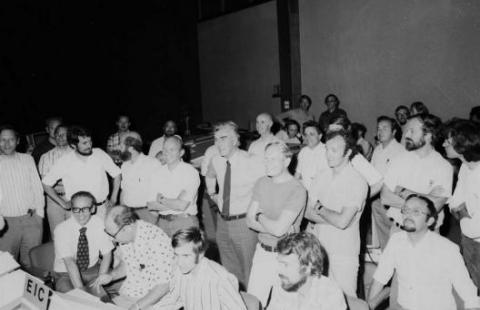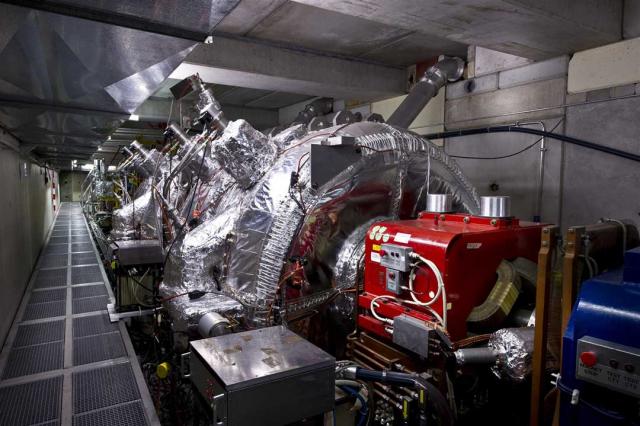



The European Organization for Nuclear Research is born
At the sixth session of the CERN Council, which…
Know more
CERN's first accelerator - the Synchrocyclotron - starts up
The 600 MeV Synchrocyclotron (SC), built in 1957…
Know more

First proton collisions: The Intersecting Storage Rings
By the late 1950s, physicists knew that a huge…
Know moreCouncil commissions the Super Proton Synchrotron
Seven kilometres in circumference, the Super…
Know moreCERN becomes one of the touch-screen pioneers
With completion of the Super Proton Synchrotron (…
Know more

Super Proton Synchrotron tunnel completed
A few months after the signature of the agreement…
Know more



Large Electron–Positron collider: First injection
With its 27-kilometre circumference, the Large…
Know more
The world's first browser/editor, website and server go live at CERN
By Christmas 1990, Sir Berners-Lee had defined…
Know moreFirst antiatoms produced: antihydrogen, at CERN
A team led by Walter Oelert created atoms of…
Know more


World's largest superconducting magnet switches on
The ATLAS Barrel Toroid, then the largest…
Know more
Final magnet goes underground after LHC repair
The 53rd and final replacement magnet for the…
Know moreALPHA traps antimatter atoms for 1000 seconds
The ALPHA experiment at CERN reported today that…
Know more
ATLAS and CMS observe a particle consistent with the Higgs boson
On 4 July 2012, as a curtain raiser to the year…
Know more

Esplanade des Particules: CERN’s new official address
CERN, the État de Genève and the Ville de Meyrin…
Know more
Embed this timeline
Origins
Early beginnings
Where to build?

The convention is complete

Breaking ground

The European Organization for Nuclear Research is born

CERN's first accelerator - the Synchrocyclotron - starts up

The Proton Synchrotron starts up

First observations of antinuclei
Georges Charpak revolutionizes detection
First proton collisions: The Intersecting Storage Rings

Council commissions the Super Proton Synchrotron
CERN becomes one of the touch-screen pioneers
Discovery of weak neutral currents

Assembly in progress inside the Gargamelle heavy-liquid bubble chamber
Super Proton Synchrotron tunnel completed

The Super Proton Synchrotron starts up

First proton-antiproton collisions
W and Z particles discovered

Heavy-ion collisions begin
LEP tunnel completed

Large Electron–Positron collider: First injection

The world's first browser/editor, website and server go live at CERN

First antiatoms produced: antihydrogen, at CERN
CMS and ATLAS experiments approved
Antiproton Decelerator approved

ALICE experiment approved
LHCb experiment approved
LEP's final shutdown
CERN celebrates its 50th birthday

World's largest superconducting magnet switches on

The LHC starts up

Incident at the LHC
Final magnet goes underground after LHC repair
ALPHA traps antimatter atoms for 1000 seconds
Tantalising hints of the Higgs
ATLAS and CMS observe a particle consistent with the Higgs boson

ATLAS spokesperson, Fabiola Gianotti, presents the collaboration's results. (IMAGE: CERN)
CERN celebrates 60 years of science for peace
Discovery of pentaquarks

Esplanade des Particules: CERN’s new official address

Pierre-Alain Tschudi, the Mayor of Meyrin, Mauro Poggia, state councillor of Geneva and Fabiola Gianotti, CERN Director-General (©CERN)